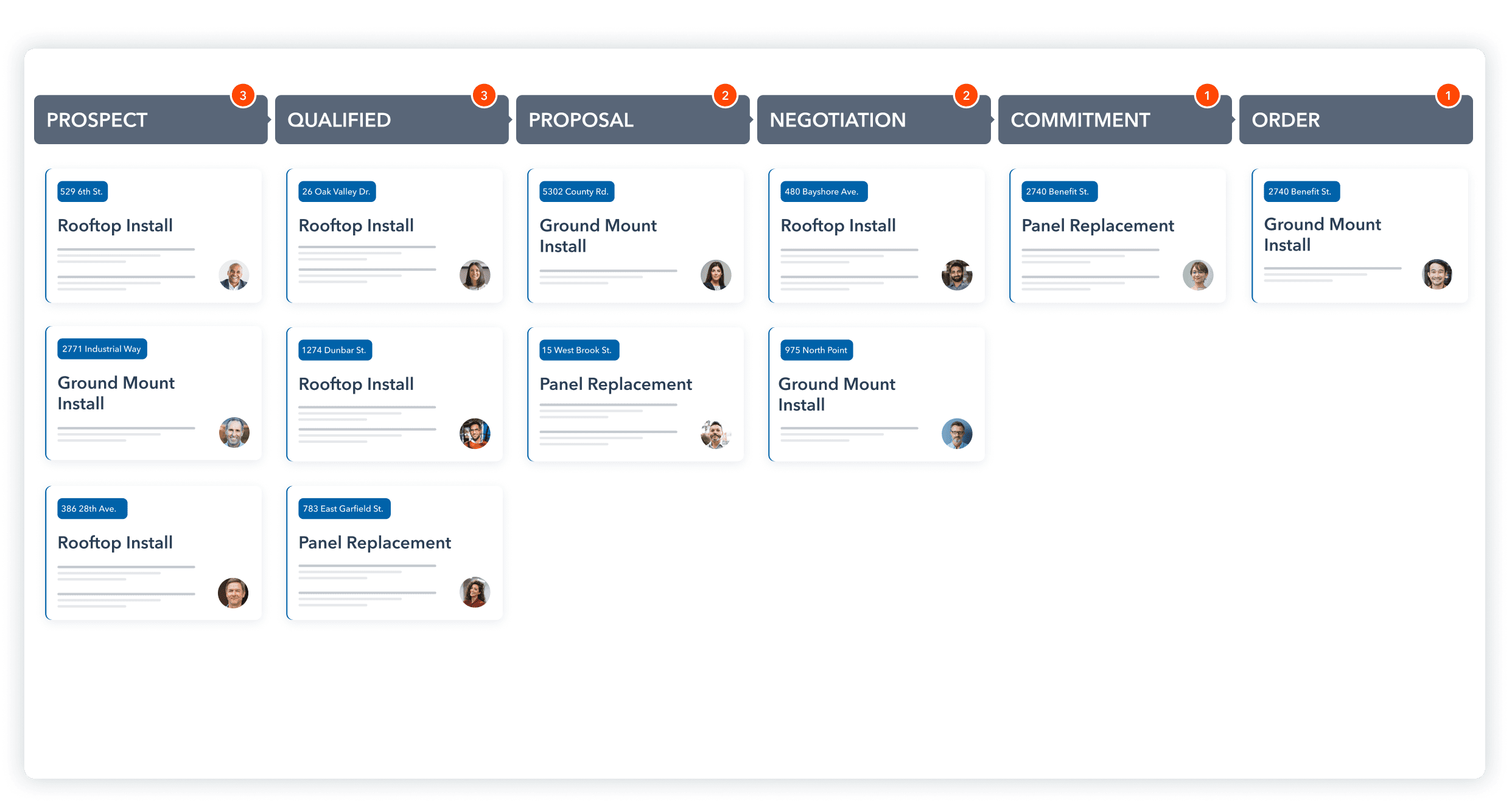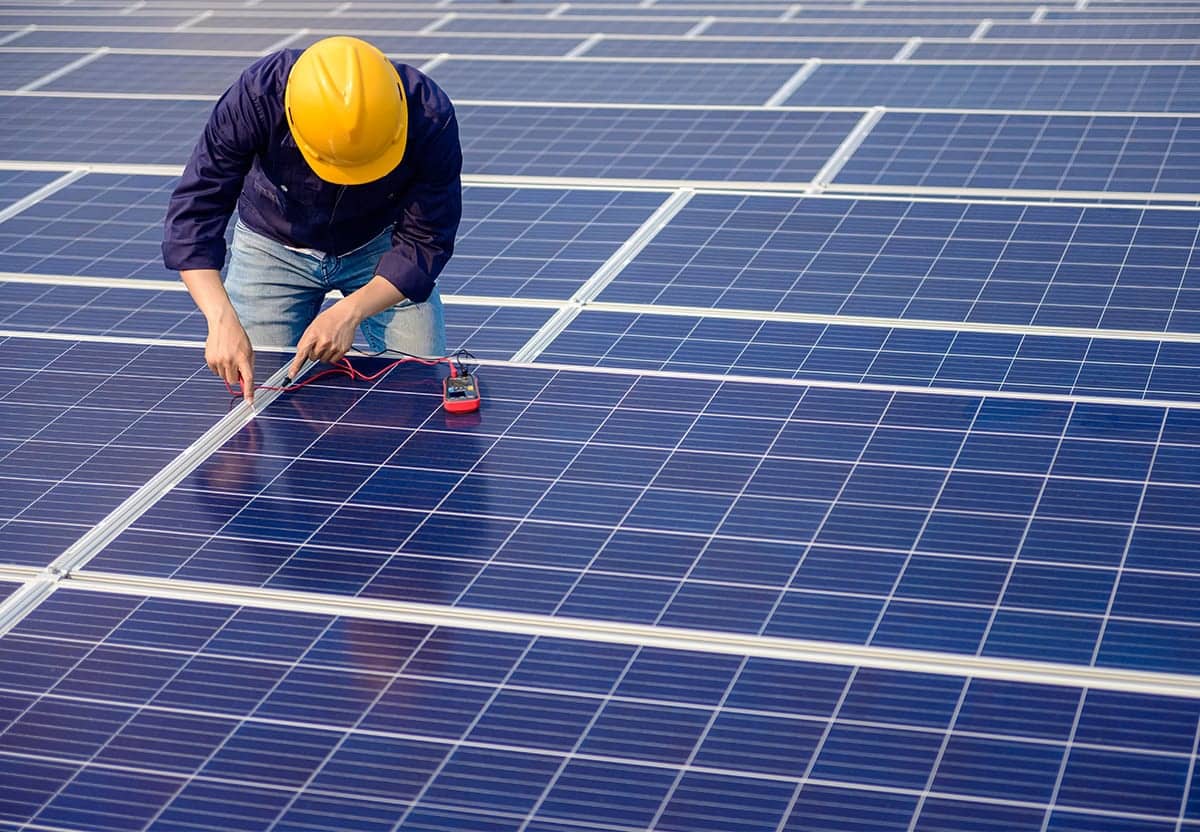The solar industry has seen explosive growth over the last decade, but there is still a gap in the commercial space. Less than 1% of electricity demand is met by on-site solar, and the biggest opportunities lie with large-scale operations that can afford to make a significant investment in renewable energy.
But with the rising cost of materials and labor translating to more expensive panels, closing those big deals is getting tougher, and each prospect requires a lot of individual attention. When you’re going after large accounts and using a high-touch strategy, a scattershot approach to prospecting won’t work—you need qualified leads that can front higher costs while you pitch the long-term benefits of solar and educate decision-makers on where they can get help with funding.
Creating a strategic framework for your solar sales pipeline ensures that you spend time nurturing and educating the right leads. This approach means your sales team will work with a smaller number of qualified leads, but they’ll have the time and space they need to close those high-revenue deals.
Qualify Leads with Street-Level Detail
Start by qualifying leads, so you only chase the targets that match your sales strategy. Keep in mind that you’re ultimately trying to build a long-term relationship with your customers, and that’s a time-intensive approach. Try to get really detailed during this step so your team doesn’t waste resources educating and pitching to the wrong prospects.
To qualify your leads, use property-based data at a granular level of detail. You’re looking for:
Industrial, multifamily residential, or commercial buildings
Large square footage, so you have a greater area to service
Large companies (potentially with multiple branch locations) if you’re chasing after big accounts
Fill in any gaps using publicly available third-party data. Solar rooftop potential scores will weed out any leads that don’t have the right surface for a large-scale panel installation, and information on the neighborhood, like the density of tree cover and typical weather patterns, can add another level of detail to your lead scoring.
You’ll need information on the individual building, too. Most likely, you’ll want to focus on owner-occupied properties, so the tenants will be in the building long enough to see the energy savings. Judging from recent permits, when was the last time they had an upgrade? The older and more inefficient their existing system is, the more they stand to save from adopting solar. That knowledge can help you eliminate prospects with up-to-date systems—especially those that have already adopted solar.
Starting out, you’ll be looking at a long list of local businesses that might be a fit. By the end of this qualification process, you’ll only see industrial buildings with enough square footage and company resources to fit your sales goals. And with that information, reps can make their first cold calls already armed with some back-of-the-napkin estimates of how much these prospects can benefit from solar.
Pitch the Long-Term Benefits of Solar
Because solar has high upfront costs (especially now), focus your sales pitch on the long-term benefits your customers will see after installation.
If solar gives them the chance to cut energy costs, how much money will that translate to years from now? For example, the University of Nebraska Medical Center has saved $30,000 on energy costs since 2019 with the help of solar. How much additional dollar value will solar add to your customer’s property over the next decade when their company has grown and they’re ready to sell? (By some estimates, they can expect a value increase of at least $4 per watt of PV installed.) And, importantly, how will your company be there to support them with additional services and upgrades five, 10, 15 years down the line?
Solar offers distinctive long-term benefits for a company’s legacy, too. We’re seeing a trend of big-name companies taking steps to improve their overall sustainability and increase their solar capacity. Apple, Amazon, Walmart, Target, and Google have all made major investments in upping their solar capacity.
A prospect that’s hesitant about investing in solar will see this list and feel more confident. And any company concerned with an eco-conscious image will understand the value of having a solar initiative to show their customers and shareholders.
Educate Clients About Solar Funding Opportunities
Even well-heeled prospects can balk at the upfront costs of solar, so an essential part of your sales pitch is reassuring them that they don’t have to cover those costs all on their own. There are government-sponsored programs available, and reps who educate prospects about them don’t just close more sales; they build the foundation for a long-term relationship.
One funding opportunity comes from the C-PACE (or commercial property assessed clean energy) program. C-PACE offers financing options to delay the upfront costs of adopting a clean energy system like solar. C-PACE financing is built around a tax assessment with long-term repayment plans—think 20 to 30 years—that’s attached to the physical property, not the company. C-PACE has led to over $2 billion in investments across more than 20 states.
Applying for C-PACE can get a little complicated, and it’s not available in every state. Check out our recent article to learn more about the C-PACE financing process—including controversies over the program and tips on finding reliable lenders.
The solar investment tax credit (ITC) offers another way for companies to save. The solar ITC is a federal corporate income tax credit available to commercial properties as a way to offset solar costs. It works on a tiered system that scales down over time, where companies can earn back a percentage of the costs they spent on solar. Companies can qualify for:
26% of their costs for projects in 2022
22% for those starting in 2023
10% for projects beginning in 2024 or later
Explain to prospects that these benefits are significant but time-bound. Decision-makers who hesitate to buy will miss out on substantial savings the longer they wait.
Track Each Deal’s Progress Through Your Pipeline
A high-touch sales approach needs a high-res way to track it. Invest in software that tracks where each deal is in the pipeline and gives sales managers an overview of their reps’ progress. Each prospect should include the relevant information on how well a property fits the sales strategy, neatly summed up in a lead score. That visibility lets managers offer more individual support and coaching to help reps close high-priority deals.

Atlas includes a Kanban-style deal tracker, so your team can stay up to date on your pipeline.
If you need tips on how to motivate your reps to successfully close more deals, check out our
webinar on building a high-performance sales team
.
Share





